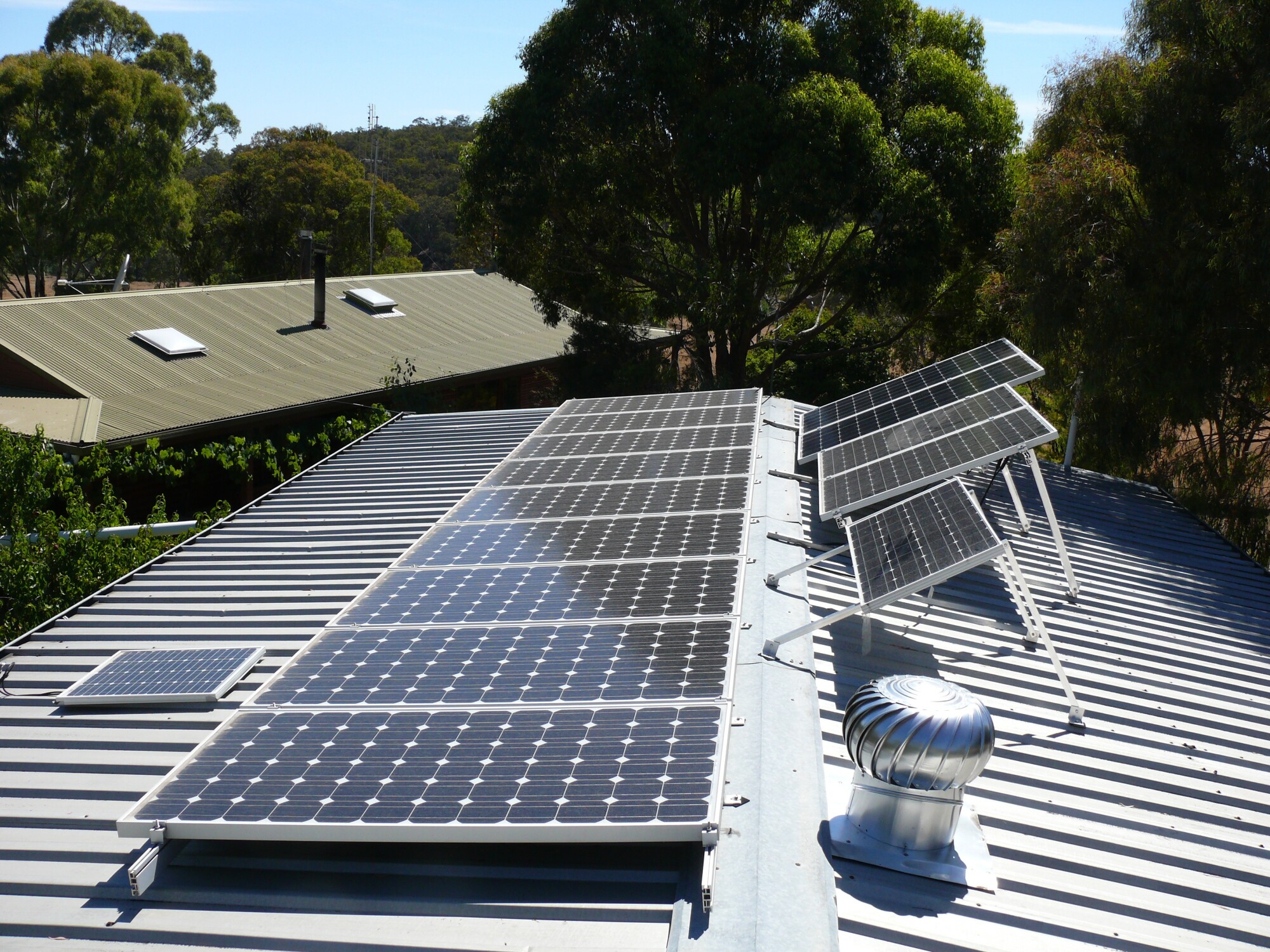Can You Install Solar Panels On a Metal Roof?

Solar power has gained a massive amount of momentum over the last several years. This type of renewable energy has become so popular that many homeowners are choosing to install rooftop solar panels.
But not all roofs are exactly alike. Some are covered with asphalt shingles, tar, and gravel, and others are solid metal. Choosing the correct type of solar panel installation varies depending on the roof type.
If you’ve been wondering if you can install solar panels on a metal roof, you’ll want to keep reading!
Types of Roofs With Solar Panels
There are several different roofing materials, and each poses its own set of advantages and drawbacks. Still, nearly every type of roof can accept solar panels.
Some of the most common types of roofs with solar panels include:
- Asphalt Shingle
- Metal
- Gravel
- Stone
- Ceramic Tile
These roof types tend to be durable enough to withstand the additional weight and pressure of a mounted solar panel.
Most residential solar panels don’t lie entirely flat against the surface of a roof. Instead, they’re mounted onto thick metal stands that allow them to sit at different angles. This helps them absorb as much sunlight as possible.
Sometimes, the mounts do hold the panels at a particular angle. Homes located in sunny environments may not need shifting panels, so a simpler stationary installation is often preferable.
That said, there are also peel-and-stick solar panels that could also be an excellent option for homeowners with non-traditional roofing. But for those with metal roofs, a standard mounted installation is likely the best route.
How to Install Solar Panels on a Metal Roof
If you’ve never had solar panels installed on a home before, the process can seem a little overwhelming. However, solar panel installation typically consists of four steps:
- Evaluation
- Planning
- Preparation
- Installation
Let’s explore each of these steps a little more deeply to discover how this process works. That way, you can feel more confident about your future solar panel installation.
Evaluation
Installing solar panels starts with booking an appointment. You can also go ahead and prepare any questions or concerns you may have.
Your chosen installation technicians will then contact you for a home consultation. During this visit, they may evaluate your roof for potential flaws or weak spots.
Your roof must be in excellent shape before placing panels. Any damaged areas or debris can lead to broken panels or dangerous working conditions for technicians.
Once your solar panel experts have confirmed that your roof is in tip-top shape and ready for mounting and installation, they’ll consult with you to find out what kind of solar panel configuration you’d like to have.
Planning
The planning stage is one of the most essential parts of installing solar panels. Based on the shape, size, and angles of your roof, you may be able to install only a handful of solar panels or several dozen.
Naturally, the number of solar panels will influence the installation and final cost. As such, your technicians will help walk you through this part of the process and assess your solar needs and preferences.
Remember, as the homeowner, you have complete control over the final installation. And once you’ve agreed to a solar setup, the technicians will go ahead and begin preparing your roof.
Preparation
One of the most crucial aspects of installing solar panels on a metal roof is preparing the mounts to receive the solar panels. This means attaching the mounts to the roof in precise locations and ensuring they’re secure.
Those with metal roofs may also want to clean their roof’s surface to ensure a durable bond between it and the mounts. Most mounts are secured to metal roofs with metal bolts and screws.
Some mounts might require a little extra security, necessitating adhesive caulk or additional mounting guides. Still, your technicians won’t begin attaching panels until each mount is stable and secure.
Installation
After double-checking the mounts, the installation technicians can carefully secure the panels onto the roof and establish connections between them. Typically, this also involves moving the wiring through the wall or attic.
Benefits of Having Solar Panels
Purchasing and installing solar panels isn’t a small task. Homeowners can expect to spend several thousand dollars on upgrading their homes with solar power sources.
But the benefits of having solar panels far outweigh the initial costs, especially over time. Some of the most notable of these benefits include:
- Reduced electricity bills each month
- Less dependence on the local power company
- Decreased reliance on polluting energy sources
- Increased property value
Additionally, if your home creates more energy than it consumes, the local power company may end up owing you money! As such, choosing to switch to solar energy is often financially and ecologically beneficial.
Even if you plan on moving out of your current home within the next several years, you may want to consider installing solar panels. That’s because solar power can significantly increase a home’s overall value.
You may also be able to take advantage of solar energy incentives and rebates. Occasionally, homeowners see a complete financial return on their solar investments thanks to these helpful programs.
Can You Put Solar Panels on a Metal Roof?
Installing solar panels on a metal roof is a straightforward process. Installation technicians can attach mounting hardware along the seams of the roof for superior strength and UV absorption.
But no matter what type of roof your home has, switching to solar power can help reduce your monthly utility bills and increase the value of your home. Going solar has never been more accessible or more affordable!
Are you interested in learning more about residential solar panel installation? If so, please contact us today for more information!
